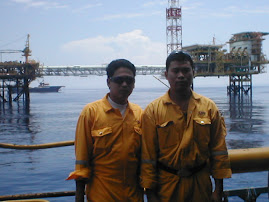Malaysia has completed the FPSO Kikeh, its first deepwater floating production storage and offloading (FPSO) facility, a significant event in the nation's endeavour to develop world class deepwater engineering and construction capability.
FPSO Kikeh, completed in 26 months, is also notable in that it is the largest such facility to be constructed in Malaysia. Built by Malaysia Marine & Heavy Engineering (MMHE), a subsidiary of MISC, at its yard in Pasir Gudang, Johor, peninsular Malaysia, the floating production unit was converted from the 337m long 279,000dwt VLCC SS Atlas. FPSO Kikeh, owned and operated by Malaysia Deepwater Terminal, a joint venture between MISC and SBM Offshore, is now on location in block K offshore Sabah, East Malaysia. Leased to Murphy Sabah Oil, the production sharing partner of Petronas Carigali, the FPSO is contracted for an initial period of eight years with options for five three-year follow-on extensions.
Moored in a water depth of 1320m about 120km northwest of Labuan Island, the FPSO will unload its cargo of oil to shuttle tankers every ten days, produced from Malaysia's first deepwater discovery using subsea wells connected to the FPSO by pipelines on the seabed and flexible risers.
Murphy Oil estimates the Kikeh field had proved reserves of 47.5mmbo and 74.6bcf of gas as at year-end 2006. Initial oil production, scheduled for startup in the second half of this year, is expected to be 40,000b/d of oil with a one-year ramp up to a plateau of 120,000b/d.
The turret
FPSO Kikeh's external turret, at around 2300t, is the heaviest ever designed by SBM. It affords permanent mooring, achieved with 10 anchor legs in a 4-3-3 configuration consisting of 127mm studless chain and 98mm wire rope, and acts as a support for the production, injection and utilities lines.
Product, water, power and communication data will be transferred between FPSO Kikeh and the anchored Kikeh DTU (dry tree unit) truss spar by way of fluid transfer lines (FTL) that utilise SBM's Gravity Actuated Pipe (GAP) system.
The turret provides fluid transfer and control functions to and from the vessel to the seabed and the DTU. Flexible subsea risers suspended from the turret feed commingled production fluids from the wells into the turret manifold. Jumpers connected to the GAP take care of fluid transfer to and from the DTU.
Produced fluids, a mixture of oil, gas, water and solid particles, flow to the topsides process modules via the turret swivels.
Treated water will pass through the turret into injection wells and produced gas not used for power generation on board will be initially injected, then exported by pipeline to Labuan Island, about a year after field production starts up.
Wellheads and DTU are controlled from the FPSO through the turret swivels and umbilicals to the seabed and DTU.
Malaysia rising
Through the transfer of technology resulting from the joint effort between MISC and SBM, the FPSO Kikeh project team from MISC and MMHE were able to develop expertise in deepwater construction. This collaboration also supported the growth and development of local vendors by providing business opportunities to more than 80 Malaysian subcontractors and service suppliers.
Marking this achievement the FPSO Kikeh naming ceremony was held at the MMHE yard on 29 March in the presence of Mohd Hassan Marican, MISC chairman and Petronas president and CEO, Claiborne Deming, Murphy Oil president and CEO, Didier Keller, SBM president, and Shamsul Azhar Abbas, MISC president and CEO.






















No comments:
Post a Comment